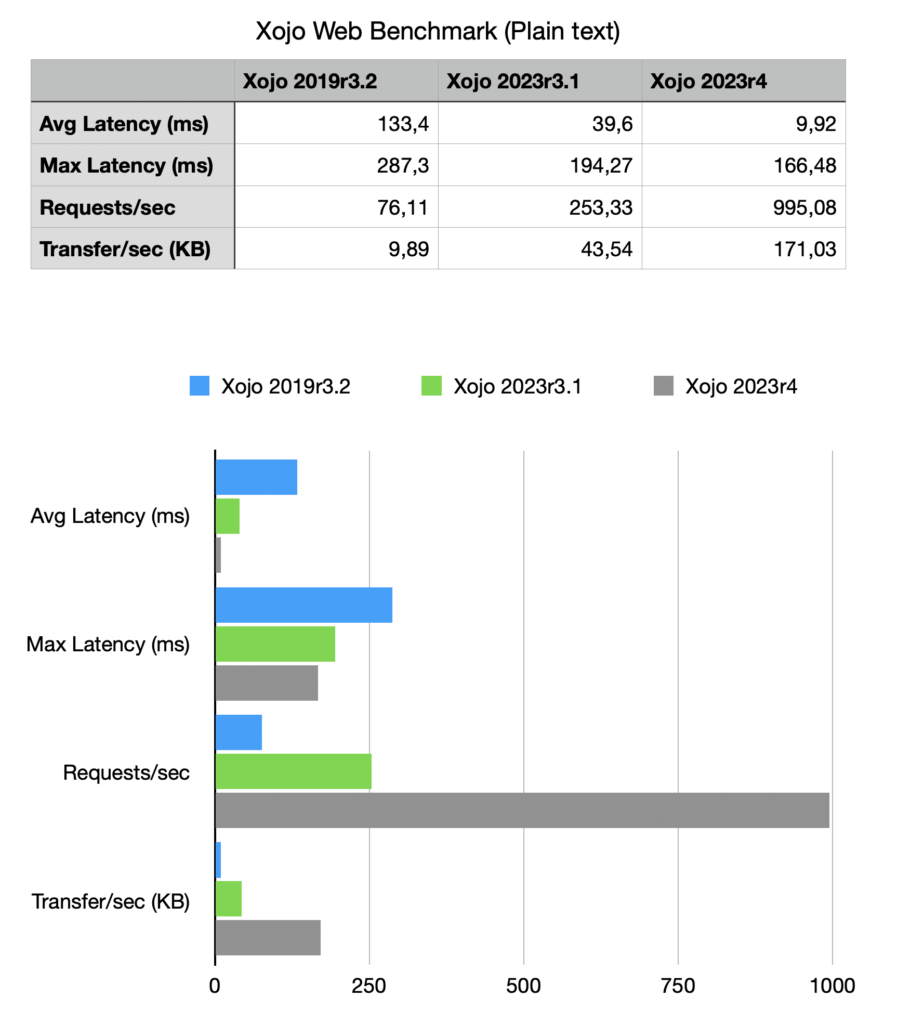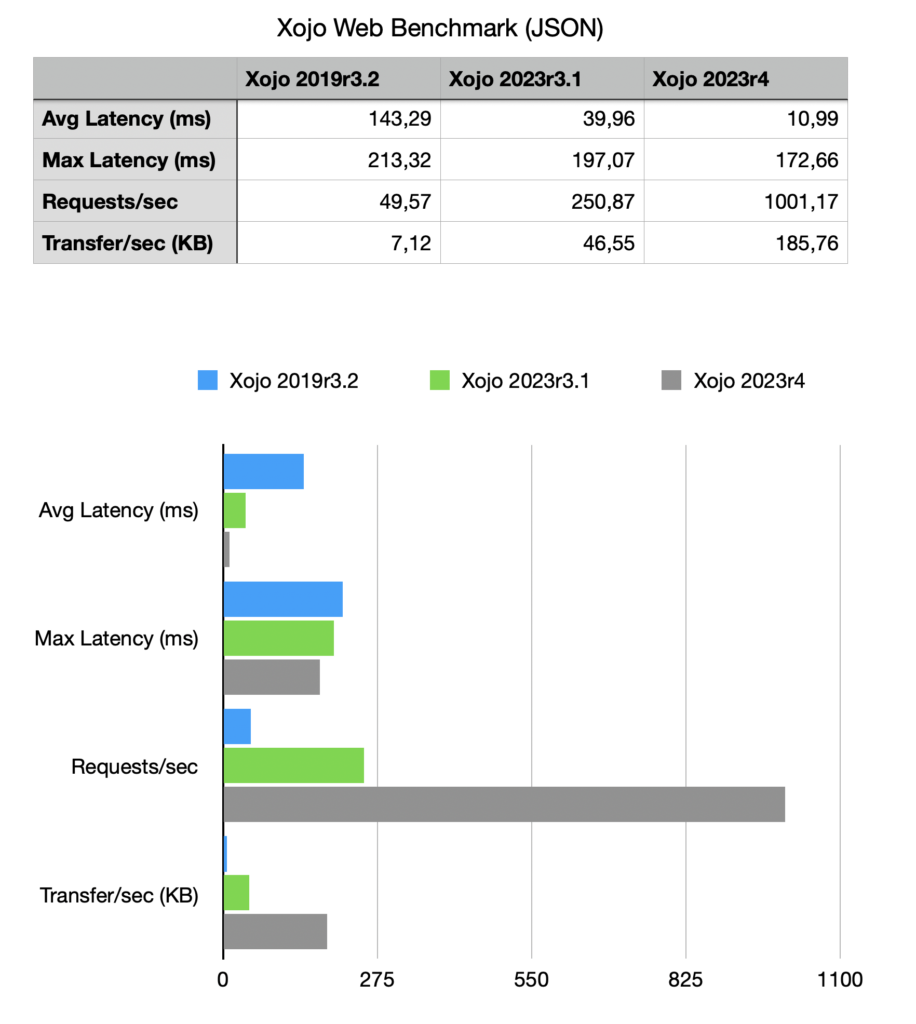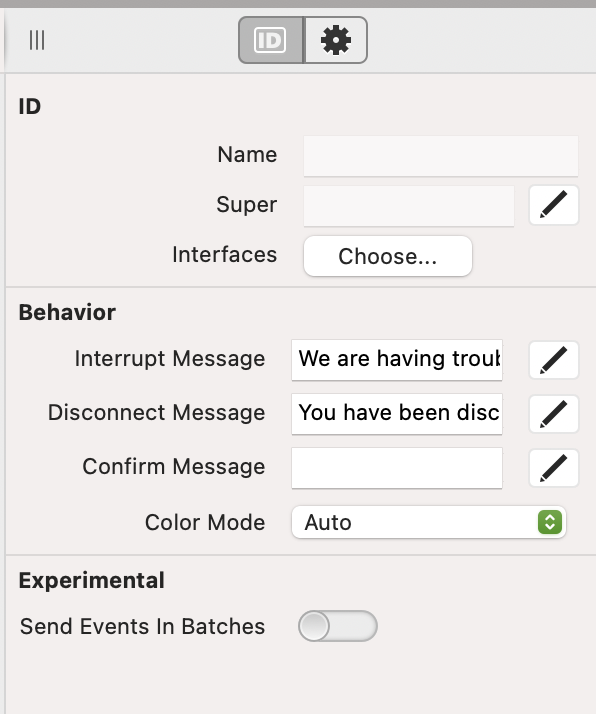The last big Xojo release in 2023 comes with a lot of performance improvements everywhere. The Xojo IDE itself is faster, which gives you Time to Reflect on Stack Optimization. In this post, I want to detail those improvements in Xojo 2023r4 that target Xojo Web including faster HandleURL responses, faster transfer rates in Windows and Linux, static assets cache control, Events improvements and a new experimental option.
Faster HandleURL Responses
With Xojo Web you can create APIs backing your Mobile or Desktop applications. Just by updating to Xojo 2023r4, your web services will get the benefit of much faster responses and the ability to handle many more requests per second.
Just to compare between different Xojo versions, we’ve created some benchmarks using Xojo Web 1 (with Xojo 2019r3.2) and some Xojo Web 2 releases, 2023r3.1 and the latest one, 2023r4.
Here are the results, returning plain text:

And the same test, but this time returning a string generated by JSONItem:

Xojo 2023r4 is capable of serving around 20x more requests per second compared to Web 1, and around 4x compared to Xojo 2023r3.1. And thanks to the reduced latency time, your API will return the contents much faster.
Faster Transfer Rates in Windows and Linux
While working on performance, we’ve found that applications deployed on Windows and Linux were serving large files much slower than those deployed on macOS servers.
William improved the low level code for sockets on those targets, allowing the server to transfer large files at a much faster speed. During my tests, I’ve seen 10x faster transfer rates.
But this doesn’t affect only our Web target! If you are using a ServerSocket with TCPSocket classes, your Console and Desktop applications will also benefit from these improved transfer rates.
Static Assets Cache Control
In this release, we’ve also improved how the framework interacts with the browser. When your user visits your web application for the first time, it will store all of the required JavaScript and CSS files.
This was already happening in previous releases but with a subtle difference. From now on, the browser won’t even need to check with the server if the file has changed since the last visit. This translates to faster load times for your users and less server load for you since the server won’t need to handle all those requests anymore.
Improved Compile Time
In this release, Xojo Web will compile your projects a few seconds faster. The first time you compile your project, it will cache the result of some processes that are only changing between Xojo releases.
Here is a comparison between 2023r3.1 and 2023r4, both are running a debug session of a blank project:
That’s around 3-4 seconds faster every time a project compiles.
Events Improvements
Some web controls were sending information from the browser to the server more frequently than needed. For example, a WebContainer.Scrolled event was being sent for every scrolled pixel, causing unnecessary server load.
We’ve been reviewing these controls and have made some improvements:
- WebCombobox
- WebContainer
- WebSearchField
- WebTextArea
- WebTextField
- WebUploader
All of them will continue communicating their state updates, but the framework will focus on delivering the latest value available.
For example, in a WebSearchField, if the user writes “hello”, the framework will send the first key press (“h”) as soon as it happens. The next event it will send will depend on how fast the user types, so it can be either “hel” or maybe directly “hello”. What is guaranteed is the TextChanged event will be fired for the final value (“hello” in this example).
New Experimental Option
WebSession has a new experimental option available, disabled by default. “Send Events in Batches”:

Turning it on will make our JavaScript framework group different event notifications in a single request. Projects that contain complex layouts that show and hide several controls at once may benefit from snappier GUIs.
As a side effect, it will also ensure the events arrive to the server in the correct order. Think about a login screen where the user has an email field, a password and a “Login” button with the Default setting turned on (to allow the user to trigger the Pressed event by pressing the Enter key). When sending the events in different requests, because of network latencies, the WebButton.Pressed event could arrive at the server before the last WebTextField.TextChanged.
We would love to hear your experiences when turning on this experimental option. If you find an issue, please report it.
Wrapping Up
As always, while Xojo 2023r4 comes with a lot of performance improvements, it also comes with bug fixes and feature requests. I want to again thank everyone who took the time to create new Bug reports and Feature Requests, and tested the pre-releases.
We’re looking forward to see what you build with it!
Ricardo has always been curious about how things work. Growing up surrounded by computers he became interested in web technologies in the dial-up connections era. Xojo has been his secret weapon and language of preference since 2018. When he’s not online, chances are he will be scuba diving … or crocheting amigurumis. Find Ricardo on Twitter @piradoiv.
